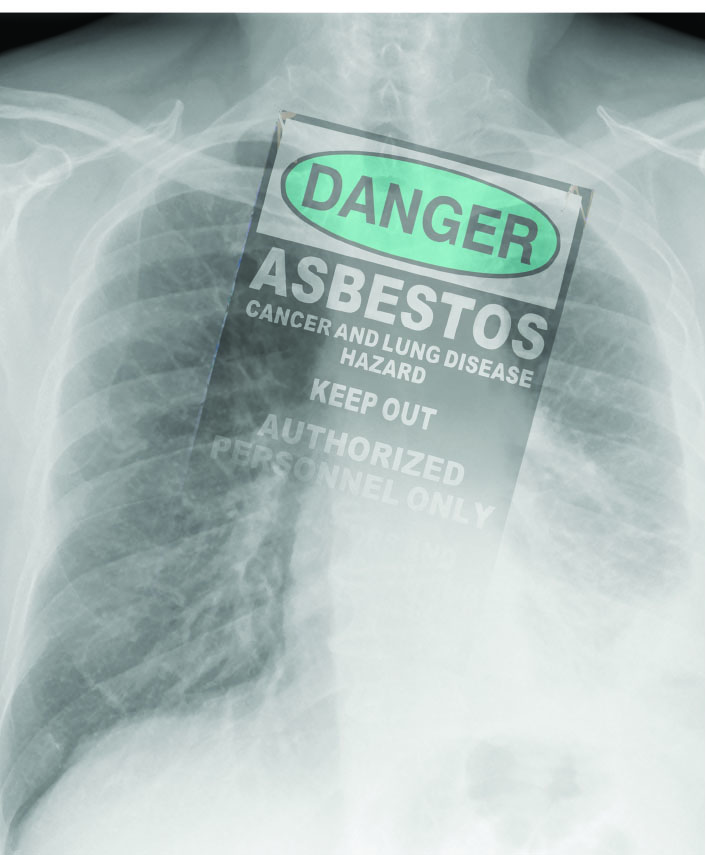In 2016, nearly 5,200 people died as a result of an occupational incident, including accidents, fires or exposure to hazardous materials, up from 4,836 deaths the year prior.
Statistically, it is not uncommon for workers, including electricians, to be exposed to harm on the job. Industry workers and tradesmen at-large are at risk of exposure to substances such as lead, mold and asbestos, a natural, but dangerous mineral linked to several life-threatening health issues.
Historically valued for its seemingly miraculous properties, such as fire-resistance, the toxin was prevalent in the construction of homes and buildings through the mid-1970s. Exposure to the toxic mineral through inhaling or ingesting the invisible fibers can lead to a variety of illnesses, including lung cancer, asbestosis and a rare cancer called mesothelioma.
Exposure on-the-job
According to the World Health Organization (WHO), roughly 125 million people, ranging from firefighters to electricians, are exposed to asbestos occupationally. Due to the abundance of asbestos-containing products used in construction during the 19th century, the carcinogen may be present throughout the home, hiding in places such as electrical wiring and ducts, insulation and ceiling tiles. Any disturbance, such as a fire or drilling into asbestos-containing drywall, could lead to the carcinogenic fibers being released into the air.
Regrettably, asbestos has yet to be banned in the United States and products are allowed to contain up to one percent of the toxin to this day. Taking proper precaution to avoid exposure, such as hiring an abatement professional and using personal protective equipment (PPE) in the workplace, is crucial.
The importance of awareness
The long latency period between exposure and diagnosis for asbestos-related cancers such as mesothelioma often leads to a poor prognosis of less than two years. Being aware of the most common symptoms of mesothelioma, including shortness of breath, chest pain, constant coughing, and abdominal pain or swelling, is essential and could be lifesaving. Mesothelioma often presents itself with symptoms that are similar to other, more common, illnesses like asthma or the flu, which is why the disease is often not correctly diagnosed until it has reached its later stages.
Treatment options, including immunotherapy, chemotherapy and surgery, are more advanced than ever before. With the help of modern day science and research breakthroughs, workers exposed to asbestos on the job have a better chance of detecting the cancer earlier, which could ultimately lead to a better prognosis and quality of life following diagnosis.
About the Mesothelioma Cancer Alliance
The Mesothelioma Cancer Alliance (MCA) is an online educational resource for mesothelioma patients and their families to learn more about the cancer and the dangers associated with asbestos exposure. For more information about mesothelioma and asbestos, visit www.mesothelioma.com/.
Sources:
1. U.S. Bureau of Labor Statistics, National Census of Fatal Occupational Injuries in 2016 – https://www.bls.gov/news.release/pdf/cfoi.pdf
2. Mesothelioma Cancer Alliance – https://www.mesothelioma.com/mesothelioma/
3. World Health Organization, Asbestos: elimination of asbestos-related diseases – http://www.who.int/en/news-room/fact-sheets/detail/asbestos-elimination-of-asbestos-related-diseases
Editors Note:
Another organization has contacted IAEI with information about mesothelioma, www.asbestos.com, and offers additional resources for patient support. This organization suggested their mesothelioma diagnosis web page at https://www.asbestos.com/mesothelioma/diagnosis/.











Find Us on Socials